Adam Samorzewski
Signal Propagation in RIS-Aided 5G Systems
Mar 24, 2025Abstract:In this paper, we conduct an in-depth analysis of radio signal propagation characteristics within the urban environment of Poznan (Poland). The study specifically addresses the deployment of a 5th generation (5G NR - New Radio) Radio Access Network (RAN), which comprises 8 strategically positioned Base Stations (BSs). These base stations are configured with either Single Input Single Output (SISO) or Multiple Input Multiple Output (MIMO) antenna technologies, contingent upon the specific requirements of the network cells they serve. A key focus of our research is the integration of 15 reflecting arrays, known as Reconfigurable Intelligent Surfaces (RISs), which were installed throughout the study area. These RISs were deployed at various suspension heights to evaluate their impact on radio signal propagation and coverage. By exploring the influence of these RIS matrices, our research sheds light on their potential to significantly enhance signal quality, particularly in urban environments.
5G Networks Supported by UAVs, RESs, and RISs
Mar 18, 2024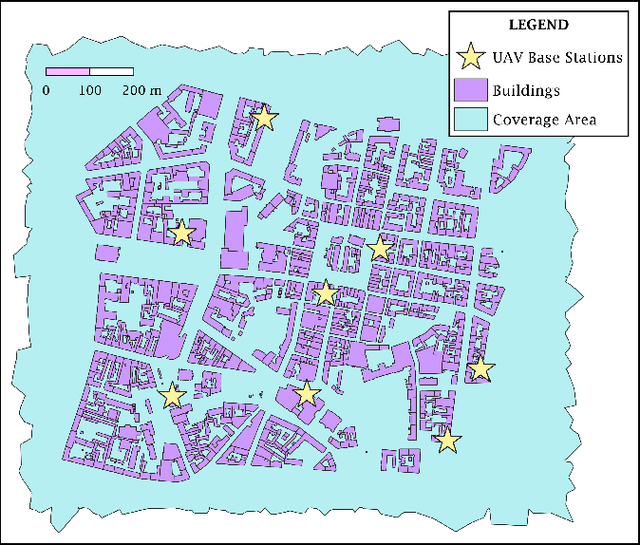
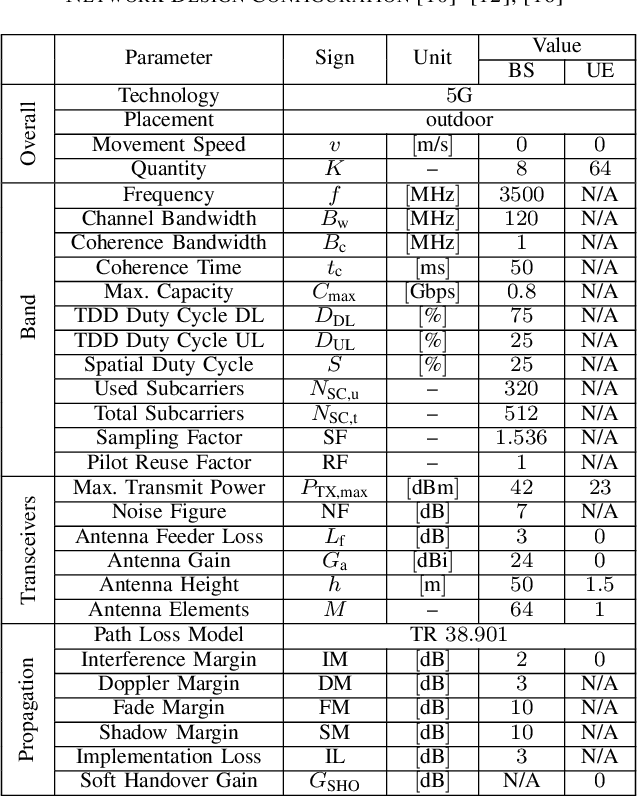
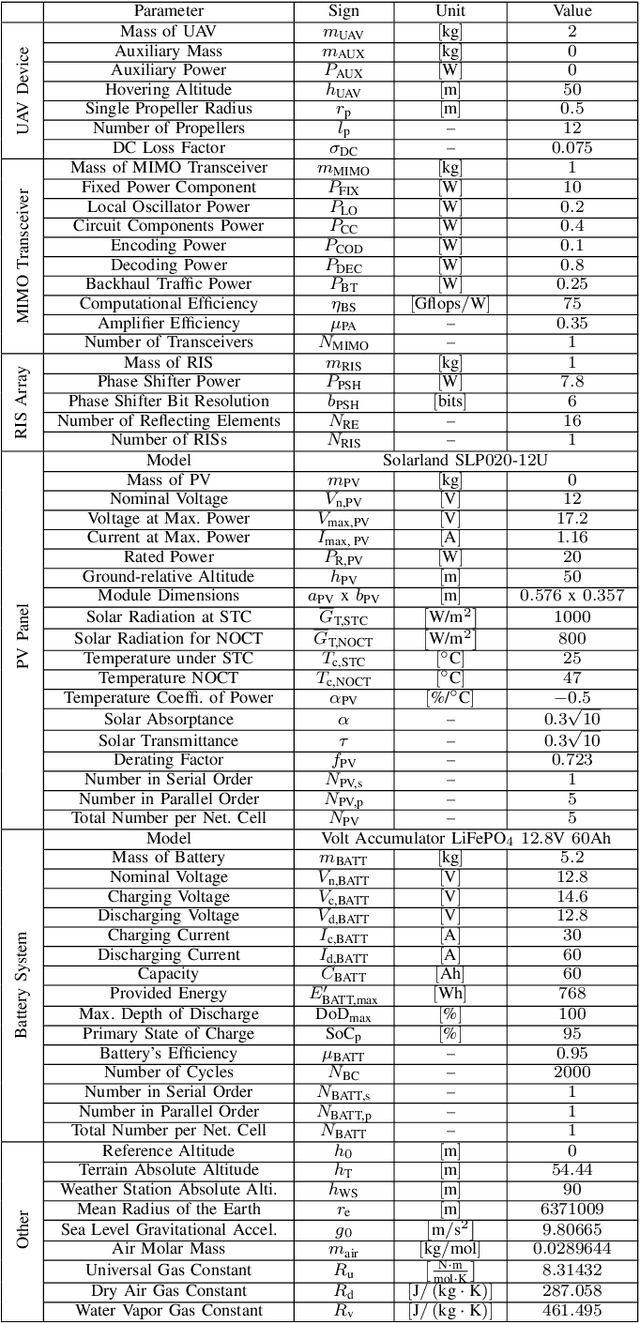
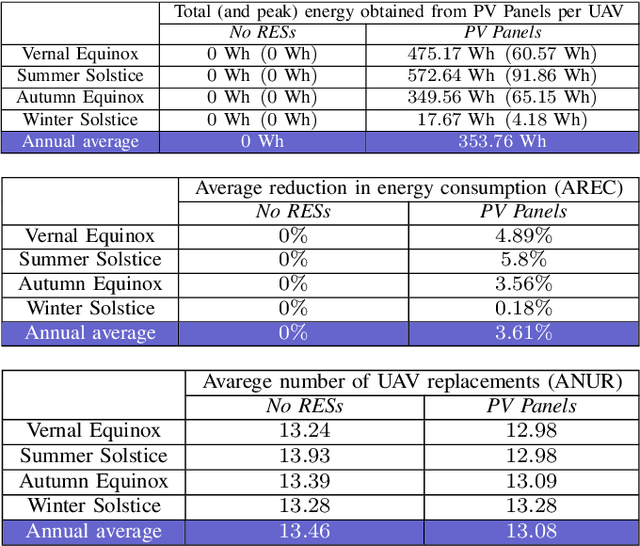
Abstract:This paper presents the examination of the 5G cellular network aware of Renewable Energy Sources (RESs) and supported by Reconfigurable Intelligent Surfaces (RISs) and Unmanned Aerial Vehicles working as mobile access nodes. The investigations have been focused on the energy side of the Radio Access Network (RAN) placed within the area of the city of Poznan (Poland). The gain related to enabling RES generators, i.e., photovoltaic (PV) panels, for base stations (BSs) was presented in the form of two factors -- the average number of UAV replacements (ANUR) with a fully charged one to ensure continuous access to mobile services for currently served user equipment (UE) terminals, and the average reduction in energy consumption (AREC) within the whole network.
* arXiv admin note: substantial text overlap with arXiv:2403.12283
Energy Consumption in Wireless Systems Equipped with RES, UAVs, and IRSs
Mar 18, 2024Abstract:The paper considers the characteristics of the energy budget for mobile base stations (BSs) in the form of Unmanned Aerial Vehicles (UAVs) equipped with Radio Frequency (RF) transceivers, Intelligent Reconfigurable Surfaces (IRSs), and Renewable Energy Sources (RESs). The obtained results highlight the benefits and challenges related to using the aforementioned mobile base stations from the energy side. The research cases took into account two types of UAV devices - multirotor and fixed-wing (airplane-like).
* The contribution of the paper was presented during the 49th Wireless World Research Forum (WWRF'49) in Poznan, Poland
On the Placement and Sustainability of Drone FSO Backhaul Relays
May 30, 2022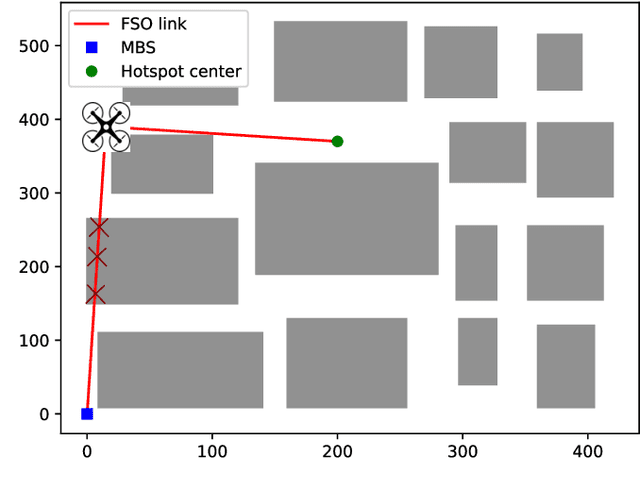
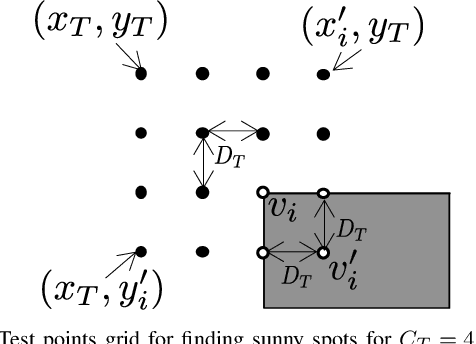
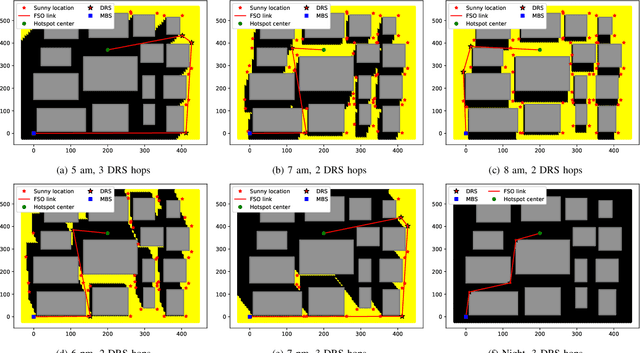

Abstract:We consider free-space optical (FSO) communication links for the backhaul connectivity of small cells (SCs) where a UAV with an FSO apparatus can serve as a backhaul relay node. We demonstrate how such drone relay stations (DRSs) can be deployed in a high-rise urban area in order to provide FSO line-of-sight (LOS) links that are unobstructed by buildings. Also, in our solution we consider the case where solar panels are mounted on DRSs such that placing the DRS in a sunny location is prioritized, and we show the gain in terms of number of required trips to recharge the UAV.
 Add to Chrome
Add to Chrome Add to Firefox
Add to Firefox Add to Edge
Add to Edge